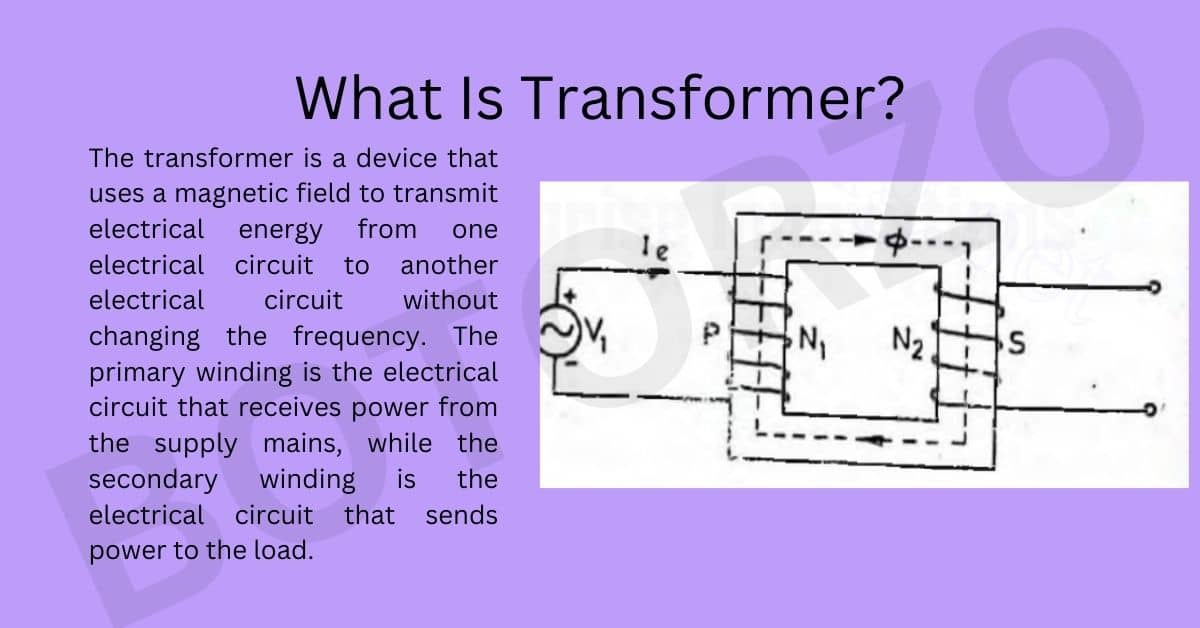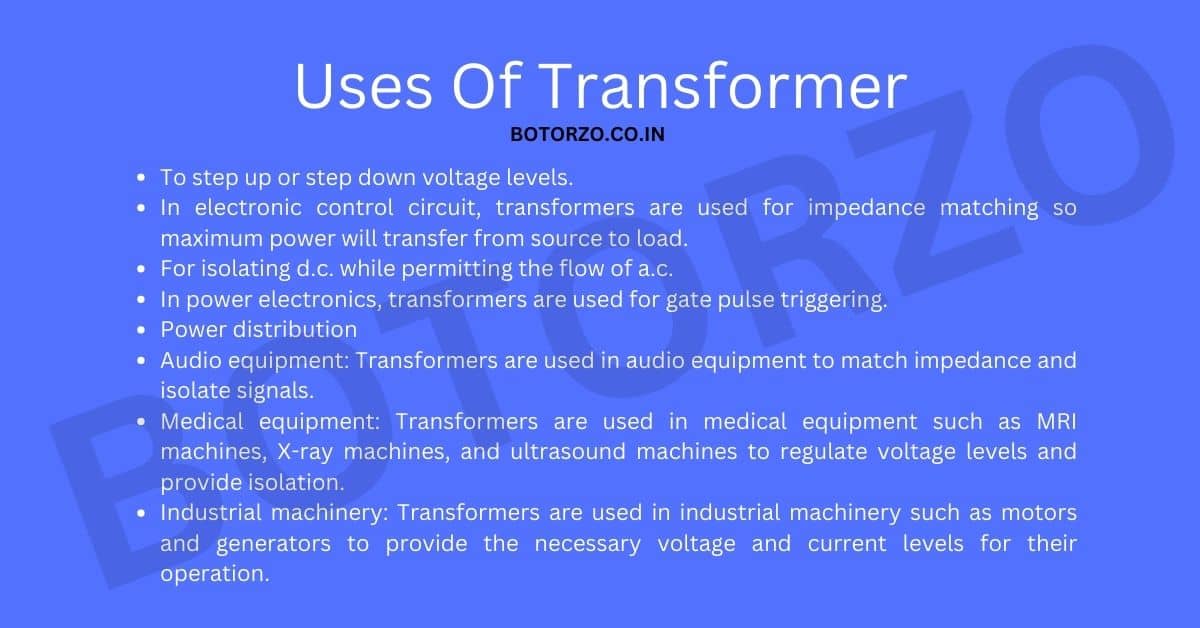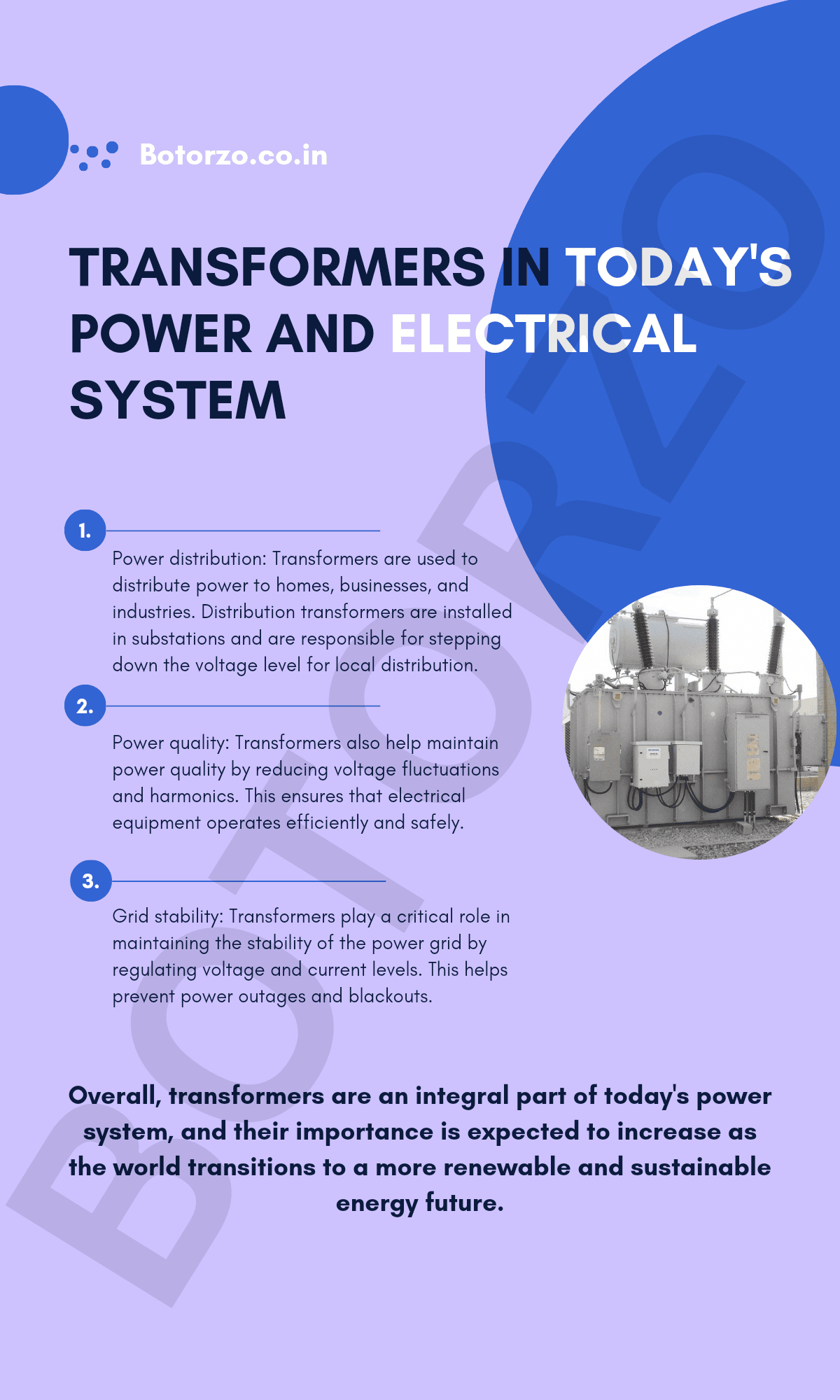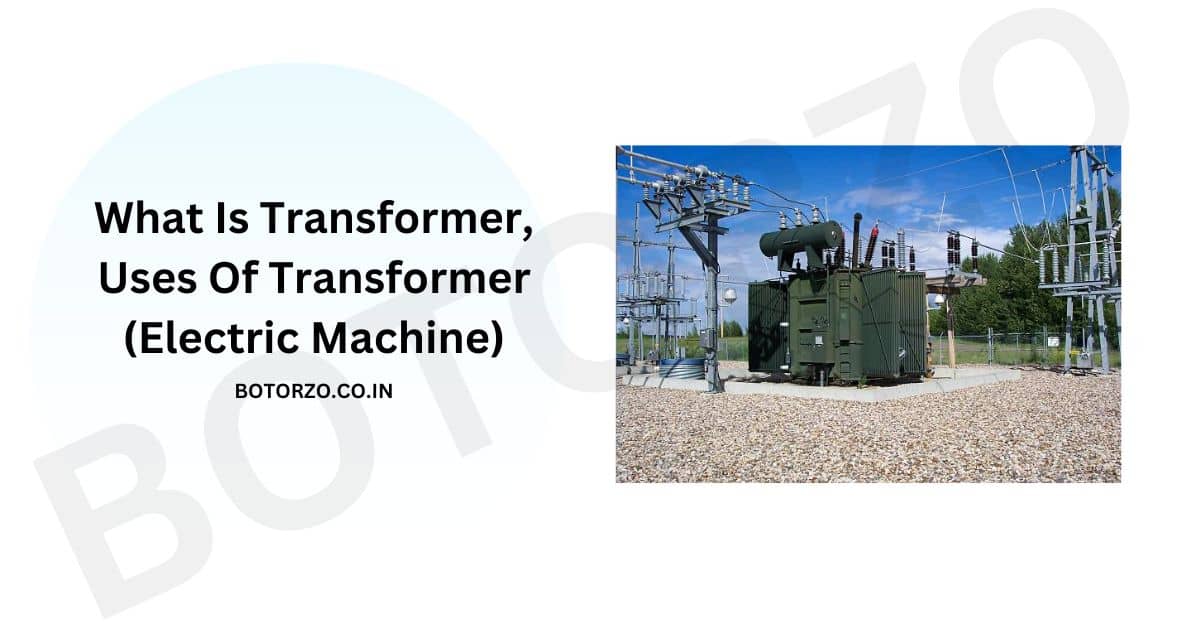What Is Transformer?
The transformer is a device that uses a magnetic field to transmit electrical energy from one electrical circuit to another electrical circuit without changing the frequency. The primary winding is the electrical circuit that receives power from the supply mains, while the secondary winding is the electrical circuit that sends power to the load.

Read More About Electrical Machine
Basic About Working Of Transformer
As the energy received by the primary is first changed to magnetic energy and then used again in the other circuits (secondary winding circuit, third winding circuit, etc.), the transformer is actually a device for converting electromagnetic energy.
As a result, a transformer’s main and secondary windings are magnetically linked rather than electrically connected. With the help of this coupling magnetic field, energy may be transferred from low-voltage to high-voltage circuits or vice versa.
The transformer is referred to be a step-up transformer if the secondary winding has more turns than the primary winding and the secondary voltage is higher than the primary voltage. The transformer is called a step-down transformer when the secondary winding has fewer turns than the primary winding and the secondary voltage is lower than the primary voltage.
In this situation, the secondary of the step-up transformer becomes the primary of the step-down transformer.
Hence, the words high-voltage winding and low-voltage winding should be used instead when referring to the windings of a certain transformer.
Uses Of Transformer

- To step up or step down voltage levels.
- In electronic control circuit, transformers are used for impedance matching so maximum power will transfer from source to load.
- For isolating d.c. while permitting the flow of a.c.
- In power electronics, transformers are used for gate pulse triggering.
- Power distribution
- Audio equipment: Transformers are used in audio equipment to match impedance and isolate signals.
- Medical equipment: Transformers are used in medical equipment such as MRI machines, X-ray machines, and ultrasound machines to regulate voltage levels and provide isolation.
- Industrial machinery: Transformers are used in industrial machinery such as motors and generators to provide the necessary voltage and current levels for their operation.
Note:
Take note that a step-up transformer can also be utilised as a step-down transformer. A transformer may actually only be referred to as a step-up or step-down transformer once it has been placed into service.
The transformer’s entire purpose is to separate the two electric circuits if the energy transfer takes place at the same voltage, which is a relatively uncommon occurrence in power applications.
transformers in today’s power And Electrical system
The infrastructure of today’s electricity systems must include transformers. They are employed for the efficient and secure long-distance transmission and distribution of electrical power. Transformers are essential in the electricity grid of today for the following reasons:

1.) Transformers are used to step up or step down the voltage level of the power source’s electrical output. Long-distance electrical power transmission and distribution are made possible by this in an efficient manner. Low voltage distribution provides safe delivery to homes and businesses, while high voltage transmission minimises the amount of power lost during transmission.
2.) Transformers are used to deliver power to residences, commercial buildings, and industrial facilities. Substation-installed distribution transformers are in charge of scaling down the voltage level for local distribution.
3.) Transformers are essential for connecting renewable energy sources to the electrical grid since renewable energy sources are increasingly being adopted. Transformers are used to increase the produced power’s voltage level to the same level as the grid and then decrease it for distribution.
4.) Transformers assist preserve power quality by lowering harmonics and voltage swings. This guarantees the safe and effective operation of electrical equipment.
5.) Transformers regulate voltage and current levels, which is essential for ensuring the stability of the electrical system. Blackouts and power outages are reduced as a result.
Overall, transformers are an integral part of today’s power system, and their importance is expected to increase as the world transitions to a more renewable and sustainable energy future.
Frequently Asked Questions
What is the function of a transformer in an electric machine?
Electric devices employ transformers to supply the required voltage and current levels for operation.
What are the types of transformers used in electric machines?
Power transformers, autotransformers, isolation transformers, and control transformers are the four most used types of transformers used in electric machinery.
What is the difference between a power transformer and a control transformer?
Although control transformers are used for control and signal isolation in electric devices, power transformers are utilised for voltage transformation and power distribution.
What are the advantages of using transformers in electric machines?
Transformers can provide isolation between the power source and the load, improve power quality, reduce voltage fluctuations and harmonics, and increase the efficiency and performance of electric machines.
Our Another Domains Vidyapedia.in And Uietmdu.in

